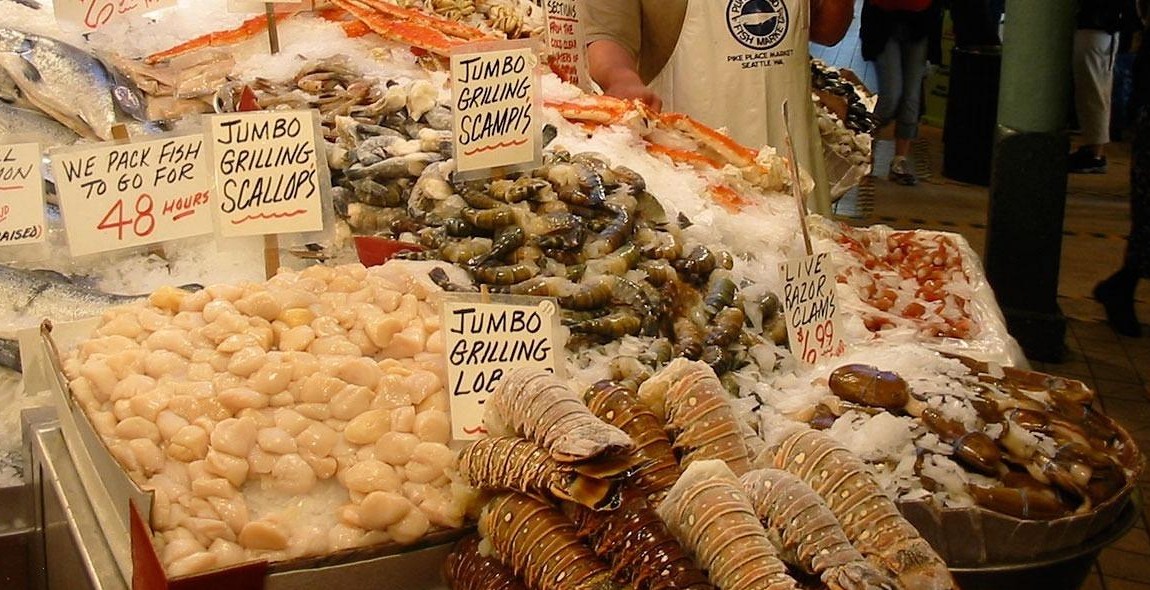Introduction: Why Cleaning and Storing Seafood Properly is Important
Freshly caught seafood is a delicious and healthy source of protein that is enjoyed by millions of people around the world. However, in order to fully enjoy the flavor and nutritional benefits of seafood, it is important to clean and store it properly. Failing to do so can lead to spoilage, foodborne illness, and a loss of quality and flavor.
The Importance of Proper Cleaning
When you catch seafood, it is important to clean it as soon as possible. This helps to remove any dirt, bacteria, or parasites that may be present on the skin or inside the fish. Proper cleaning also helps to remove any blood or other fluids that can contribute to spoilage and off-flavors.
There are many different methods for cleaning seafood, depending on the type of fish or shellfish you have caught. Some common techniques include scaling, gutting, and filleting. It is important to use clean tools and work surfaces when cleaning seafood, and to wash your hands frequently to avoid cross-contamination.
The Importance of Proper Storage
After you have cleaned your seafood, it is important to store it properly in order to maintain its quality and freshness. This means keeping it at the right temperature, protecting it from light and air, and avoiding cross-contamination with other foods.
There are many different methods for storing seafood, depending on the type of fish or shellfish you have caught and how you plan to use it. Some common techniques include refrigeration, freezing, and vacuum-sealing. It is important to follow proper storage guidelines to avoid spoilage and reduce the risk of foodborne illness.
In this article, we will explore the best practices for cleaning and storing freshly caught seafood, so that you can enjoy the full flavor and nutritional benefits of your catch.

Cleaning Your Fresh Seafood
One of the most important steps in preserving the freshness of your freshly caught seafood is cleaning it properly. Cleaning your seafood will remove any dirt, debris, and bacteria that may be present on the surface of the fish. Here is a step-by-step guide on how to clean your fresh seafood:
Tools You Will Need
Before you begin cleaning your seafood, make sure you have the following tools:
- A cutting board
- A sharp knife
- A bowl of clean water
- A clean towel or paper towels
- A pair of kitchen scissors (optional)
Step-by-Step Cleaning Process
Follow these steps to clean your fresh seafood:
- Remove any scales: Use a sharp knife to remove the scales from the fish. Hold the fish firmly by the tail and scrape the scales from the tail to the head. Rinse the fish under running water to remove any loose scales.
- Remove the guts and organs: Use a sharp knife to make a cut along the belly of the fish, from the tail to the head. Use your fingers or a spoon to remove the guts and organs from the fish. Rinse the fish under running water to remove any remaining blood or debris.
- Remove the head and tail (optional): If you prefer to remove the head and tail, use a sharp knife to make a cut behind the gills and another cut at the base of the tail. Discard the head and tail.
- Rinse the fish: Rinse the fish under cold running water to remove any remaining blood or debris. Use a clean towel or paper towels to pat the fish dry.
- Cut the fish into fillets (optional): If you prefer to fillet the fish, use a sharp knife to cut along the spine of the fish, from head to tail. Use the kitchen scissors to cut through the bones and remove the fillets. Rinse the fillets under cold running water and pat them dry with a clean towel or paper towels.
Tips for Proper Cleaning
Here are some tips to keep in mind when cleaning your fresh seafood:
- Always use a sharp knife to avoid damaging the fish and to make the cleaning process easier.
- Work over a clean surface, such as a cutting board, to avoid contaminating the fish with bacteria or other debris.
- Use clean water to rinse the fish and change the water frequently to avoid recontaminating the fish.
- Pat the fish dry with a clean towel or paper towels to remove any excess moisture. This will help prevent the fish from spoiling.
- If you are not planning to cook the fish immediately, store it in a clean container and keep it in the refrigerator or freezer until you are ready to use it.
| Tip | Reason |
|---|---|
| Use a sharp knife | To avoid damaging the fish and to make the cleaning process easier. |
| Work over a clean surface | To avoid contaminating the fish with bacteria or other debris. |
| Use clean water | To rinse the fish and avoid recontaminating it. |
| Pat the fish dry | To remove excess moisture and prevent the fish from spoiling. |
| Store the fish properly | To maintain its freshness and quality until you are ready to use it. |

Storing Your Fresh Seafood
Once you have cleaned your freshly caught seafood, it is essential to store it properly to preserve its freshness and flavor. There are two main ways to store seafood – refrigeration and freezing.
Refrigerating Your Seafood
Refrigeration is the best way to store seafood if you plan to consume it within a few days. Here are some tips for storing your seafood in the refrigerator:
- Place your cleaned seafood in an airtight container or a plastic bag with a tight seal.
- Store the seafood on the bottom shelf of the refrigerator, where the temperature is the coldest.
- Do not stack the seafood on top of each other, as this can cause them to become squished and lose their shape.
- If you have a lot of seafood to store, you can place it in a shallow container and cover it with ice. Make sure to drain any excess water from the container regularly.
- Check the seafood regularly and discard any that appears slimy or has a strong odor.
Freezing Your Seafood
If you do not plan to consume your seafood within a few days, freezing is the best way to store it. Here are some tips for freezing your seafood:
- Clean your seafood thoroughly and pat it dry with paper towels.
- Place the seafood in an airtight container or a freezer bag with a tight seal.
- Label the container or bag with the type of seafood and the date it was frozen.
- Place the container or bag in the coldest part of the freezer.
- Do not freeze seafood that has been previously frozen and thawed.
- When you are ready to use the frozen seafood, thaw it in the refrigerator overnight. Do not thaw it at room temperature, as this can cause bacteria to grow.
Tips for Proper Storage
Here are some additional tips for storing your fresh seafood:
- Never store seafood at room temperature, as this can cause it to spoil quickly.
- Do not store seafood near strong-smelling foods, as it can absorb their odor.
- If you are storing different types of seafood in the same container or bag, make sure to keep them separated to prevent cross-contamination.
- Always use fresh seafood within 2-3 days of purchase or catch.
| Storage Method | Best For | How Long |
|---|---|---|
| Refrigeration | Consumption within a few days | 2-3 days |
| Freezing | Long-term storage | 3-6 months |
By following these tips for storing your fresh seafood, you can ensure that it stays fresh and flavorful for as long as possible.

Conclusion
Cleaning and storing your freshly caught seafood is crucial to preserving its quality and freshness. By following the steps outlined in this article, you can ensure that your catch remains safe to eat and maintains its delicious flavor.
Enjoying Your Fresh Seafood
Once you have cleaned and stored your seafood, it’s time to enjoy the fruits of your labor. There are countless ways to prepare and cook fresh seafood, from grilling and frying to baking and broiling.
One popular method is to simply season your seafood with salt, pepper, and lemon juice, then grill it over an open flame for a few minutes on each side. This is a great way to bring out the natural flavors of the fish and create a simple yet delicious meal.
Another option is to add your seafood to a pasta or rice dish, or to use it as a topping for a salad or pizza. The possibilities are endless, and with fresh seafood, the results are always delicious.
Remember
When it comes to seafood, freshness is key. By following the tips in this article, you can ensure that your catch stays fresh and safe to eat, allowing you to enjoy the delicious taste of the ocean from the comfort of your own home.
